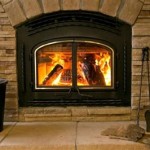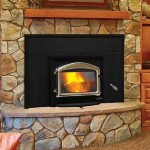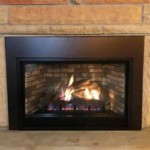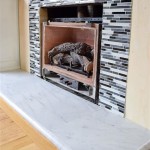Freestanding Wood Burning Fireplaces: A Guide to Choosing and Enjoying
A freestanding wood-burning fireplace offers a blend of warmth, ambiance, and traditional charm that can transform a living space. These independent heating units provide an attractive focal point and a source of cozy heat, adding a touch of rustic elegance to modern homes. However, choosing the right freestanding wood-burning fireplace requires careful consideration of factors such as size, efficiency, safety, and aesthetic preferences.
Key Considerations for Choosing a Freestanding Wood Burning Fireplace
Selecting a freestanding wood-burning fireplace involves weighing several crucial factors to ensure it meets your specific needs and preferences. Consider these key aspects:
1. Size and Space
The fireplace's size should be proportional to the room it will occupy. A large fireplace in a small space can overwhelm the room, while a small fireplace in a large space may appear insignificant. Measure the available space and choose a fireplace whose dimensions complement the existing furniture and decor. Ensure adequate clearance from combustible materials, such as walls and furniture, following safety guidelines.
2. Heat Output
Determine the amount of heat required for your space. The heat output of a freestanding wood-burning fireplace is measured in British thermal units (BTUs). Consider the size of the room, insulation levels, and climate conditions. A larger fireplace with higher BTU output is suitable for spacious rooms or colder climates. However, a smaller fireplace may be sufficient for smaller spaces or regions with milder temperatures.
3. Efficiency
Energy efficiency is a crucial factor in fireplace selection. Modern wood-burning fireplaces are designed with features like catalytic converters and air wash systems to improve efficiency. These technologies can reduce wood consumption and minimize smoke emissions, contributing to a more sustainable heating solution. Look for fireplaces with high energy star ratings for optimal efficiency.
4. Aesthetics and Style
Freestanding wood-burning fireplaces are available in various designs, materials, and finishes to match any décor. Consider factors such as the style of your home, preferred aesthetic, and desired ambiance. Some popular options include classic cast iron, modern steel, and sleek glass-front designs. Ensure the chosen fireplace complements your existing interior design and creates a harmonious visual appeal.
Safety Features and Considerations
Safety is paramount when using any wood-burning appliance. Freestanding wood-burning fireplaces should be installed and operated according to manufacturer's instructions and local safety codes. Ensure the fireplace is properly vented to prevent smoke and carbon monoxide buildup. Inspect the chimney regularly for creosote buildup, which can be a fire hazard. Install smoke detectors and carbon monoxide detectors in your home to ensure timely detection of any potential issues.
Advantages and Disadvantages of Freestanding Wood Burning Fireplaces
Like any heating system, freestanding wood-burning fireplaces have both advantages and disadvantages. Understanding these aspects can help you make an informed decision.
Advantages:
- Warmth and Ambiance: Wood-burning fireplaces provide a unique and cozy atmosphere that cannot be replicated by other heating systems. The crackling flames and dancing light create an inviting and relaxing ambiance.
- Cost-Effective: Wood is a renewable and often readily available fuel source, making wood-burning fireplaces a potentially cost-effective heating option, especially in areas with abundant wood supply.
- Aesthetic Appeal: Freestanding wood-burning fireplaces add a touch of rustic elegance and character to any living space. They create a focal point that draws attention and enhances the overall ambiance of the room.
Disadvantages:
- Maintenance: Wood-burning fireplaces require regular maintenance, including cleaning the chimney, removing ash, and replenishing the fuel. This ongoing upkeep can be time-consuming and require effort.
- Safety Considerations: Open flames and hot surfaces pose potential fire hazards. Proper ventilation, installation, and operation are crucial for safety. Regular inspections and maintenance are also essential.
- Environmental Impact: Wood-burning fireplaces can contribute to air pollution. While modern fireplaces are more efficient and emit fewer pollutants, they still release some smoke and particulate matter into the atmosphere.
Enjoying Your Freestanding Wood Burning Fireplace
Once you have chosen and installed your freestanding wood-burning fireplace, you can start enjoying its warmth and ambiance. Remember to follow these tips for optimal enjoyment:
- Use seasoned wood: Seasoned wood, which has dried for at least six months, burns hotter and cleaner, producing less smoke and creosote.
- Start a fire correctly: Use tinder, kindling, and larger logs to create a controlled and efficient fire.
- Maintain proper ventilation: Ensure the fireplace is properly vented to prevent smoke and carbon monoxide buildup.
- Clean the chimney regularly: Inspect and clean the chimney annually to remove creosote buildup, which can be a fire hazard.
- Use a fire screen or grate: These accessories can help prevent sparks and embers from escaping the fireplace.
- Enjoy the ambiance: Relax and appreciate the warmth, light, and crackling sounds of your wood-burning fireplace.

Studio 2 Freestanding Wood Burning Stove Stovax Stoves

Suspended Fashion Indoor Freestanding Wood Burning Stove China Weather Resistant Fireplaces Made In Com

Freestanding Wood Burning Stoves Sierra Hearth And Home
Dru Fire

How To Buy A Wood Stove Buyer S Guide From Regency
Dru Freestanding Wood And Multi Fuel Stoves Fires

Wood

Minneapolis St Paul Freestanding Stoves Gas And Wood Burning

What Is A Freestanding Wood Stove Fireplace Service Experts

Stuv 6 H 6655 Freestanding Wood Burning Stove Bonfire
Related Posts








